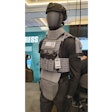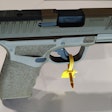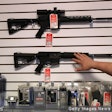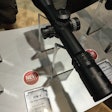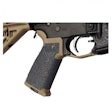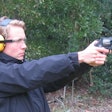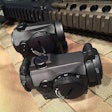Consider the following exercises to better train officers for various levels of authorized force, including worst-case scenarios involving gun battles with determined suspects.
One training scenario could involve an off-duty law enforcement officer or undercover agent forced to engage one or more heavily armed violators until backup arrives. Another option could involve one or more LEOs forced to engage man-size paper targets representing a heavily armed active shooter, bank robbers or an armed fugitive. The scenarior could be a potential ambush situation or the intense events surrounding the rescuing of a downed officer under fire.
In general terms, these exercises require LEOs to either advance toward a "simulated" combat threat or hold their ground behind the best cover available, while delivering accurate "containment" fire.
Fierce gun battles may also require officers to engage targets while waiting for backup to arrive, possibly render first aid to a wounded officer or civilian, and provide well-aimed covering fire while officers retreat from an ambush site. To simlate a real-world scenario, the ambush site would be controlled by officers playing roles as gang members, domestic or foreign terrorists, or hate group members who may have fire superiority and a greater sized enemy force.
To make this training realistic and raise the perceived threat level, I recommend that during such exercises law enforcement officers should be required to execute combat reloading drills, clear simulated or actual stoppages, drag a seriously wounded officer or civilian behind suitable cover, transition to another firearm, or train to use the downed officer's firearms and ammunition.
LEOs who train in this way practice providing covering fire for LEOs who are reloading or clearing simulated or actual stoppages while providing accurate covering fire while officers fall back.
It's imperative that these advanced firearms training exercises require LEOs under simulated attack to render basic first aid and learn to use the right expenditure of ammunition when they are forced to "hold the line" while they wait for backup.
They may also be required to move to an appropriate line of fire that enables them to successfully eliminate the threat, possibly with a head shot, if the "active shooter/criminal" paper target wears body armor.
Imagine being pinned down and your closest backup is 30 minutes away. What happens when you're down to using your backup gun that you may not be carrying extra ammunition for? Surrender is not an option when someone or some hate group has ambushed you and shot up your patrol car.
Trust me. In addition to enhancing your hit potential under stress, this type of training also makes you feel confident about the firearms and optics you use when everything works as designed.
I became an even greater fan of my Aimpoint CompM4 red-dot optic the last time I fired more than 210 rounds in rapid-fire succession in a course of fire. Once I moved to a new position, I was able to lean against a tree to brace myself; I continued to provide covering fire for my two sons while I served as the safety officer, relayed commands, and observed as they moved through a course with carbines and service pistols.
To keep costs down, conduct this training using .22 LR conversion kits on service pistols or carbines. Other options I prefer include a Century International Arms Bulgarian AK-74, Smith & Wesson M&P15R or any of the LWRC International carbines chambered in 5.45x39mm. This former Soviet military ammunition is similar to .223 Remington or 5.56x45mm NATO and costs half as much.
When running these exercises, don't forget to have instructors closely monitor LEOs on the range for safety purposes.
Related:
VIDEO: Deadly Gun Battle at Ohio Trailer Park










